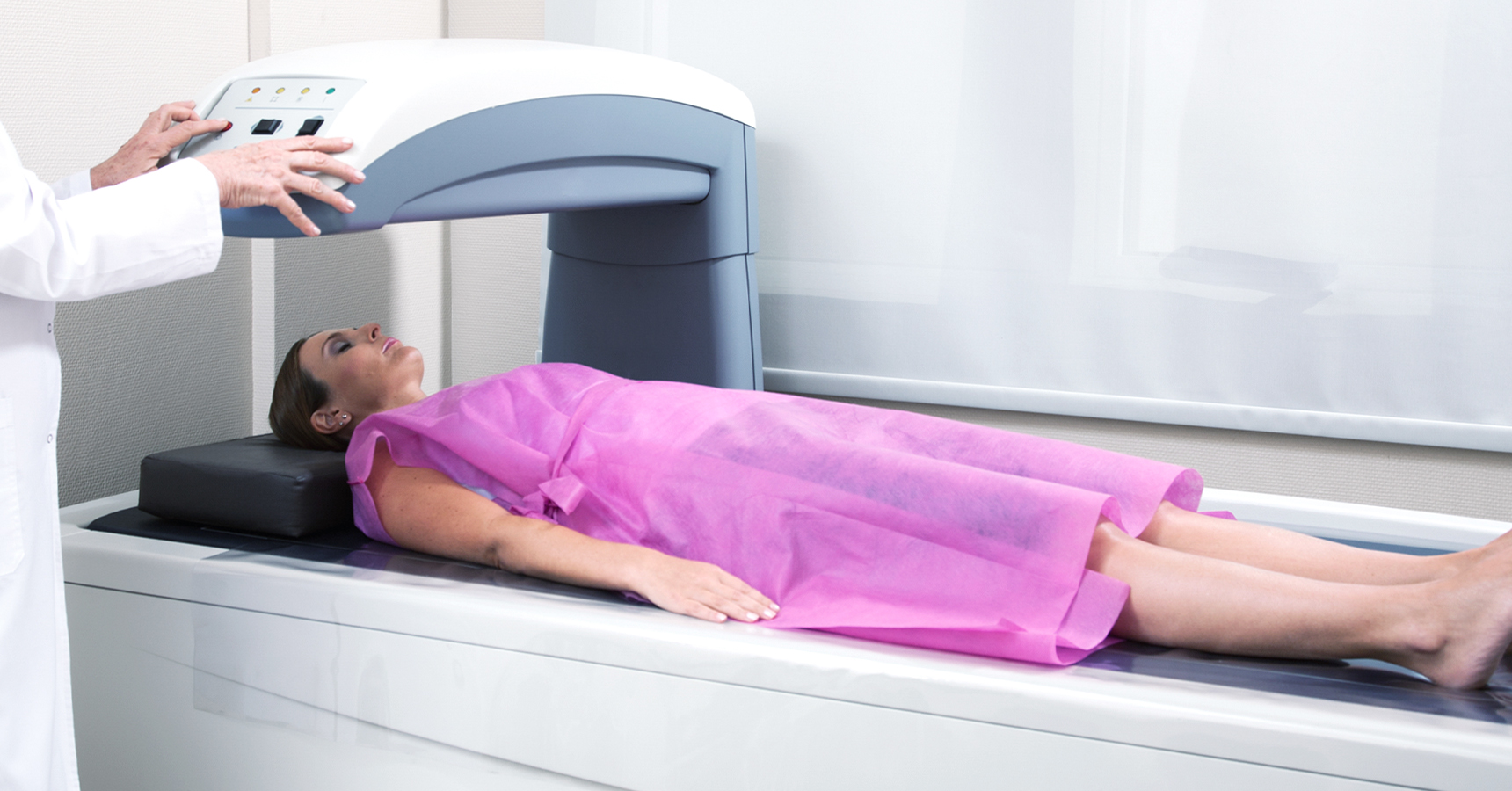
Dexa stands for dual-energy X-ray absorptiometry. A Dexa scan is a high-precision X-ray scan that is used to measure bone health. It measures bone density (strength) and helps to work out risks associated with bone disease(s). A Dexa scan can help provide information about the risk of osteoporosis (bone loss) and bone fractures (bone breaks). It is also known as a DXA scan.
A Dexa scan can be helpful in providing relevant information to –
- Detect osteoporosis (bone loss) or osteopenia (low bone mass)
- Predict future bone fractures
- Determine bone loss rate
- Monitor on-going treatments
What is osteoporosis?
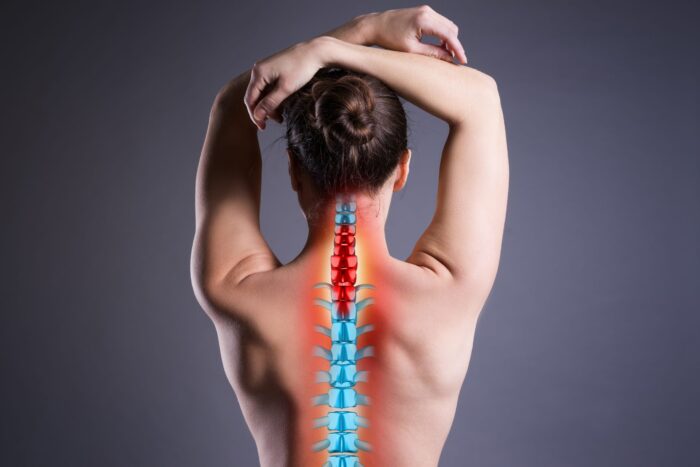
Osteoporosis is a medical condition in which the bones of the body become weak and fragile due to the loss of tissues in them. It indicates low bone mass and low bone strength.
What is osteopenia?
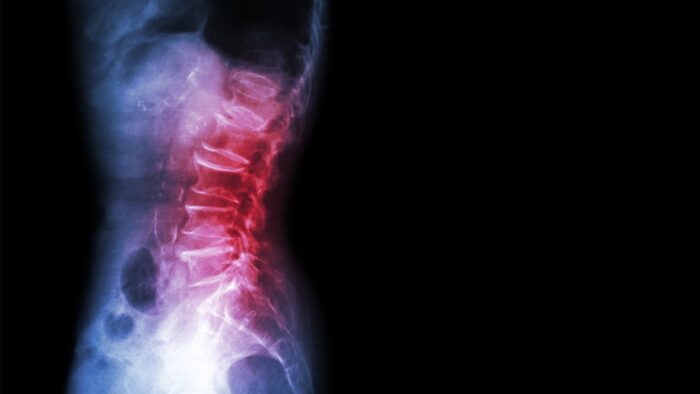
Osteopenia is a medical condition in which the body does not make new bones as rapidly as it absorbs old bones. It indicates that the bones in the body are weaker than normal.
How does a Dexa scan machine work?
A Dexa scanner consists of the following parts
- An imaging device (looks like an arm and is placed above the patient)
- An X-ray generator (placed under the table)
- A computer (to calculate the density of the bone)
A Dexa scan machine uses X-ray beams from two different sources, one with low energy and one with high energy. These X-ray beams travel through the bone(s) being tested. Some bones block a certain amount of X-rays depending on their density. The amount of X-rays that are allowed to pass through the bones are then identified by the detector and sent to the computer. The computer in return calculates the average density of the bone. A less score indicates low bone density.
Dexa scan uses
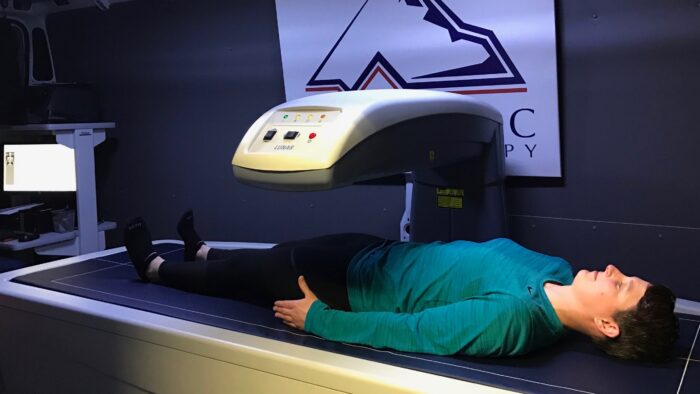
A Dexa scan is a bone density test. It provides the doctor with a way to measure the strength of the bones and can be used to detect bone loss and prevent bone fractures and disability.
A doctor may recommend a Dexa scan for the following reasons –
Osteoporosis
Osteoporosis is a bone disease that develops when the body is at a loss of too much bone and the new bone production is slow or both. It occurs when the creation of the new bone does not keep up with the loss of the old bone. This results in the weakening of the bones and leads to the bone becoming so fragile that it can be break by small gestures like sneezing, coughing, or minor bumps.
This condition is caused by the lack of calcium in the bones of the body.
A few symptoms of Osteoporosis are –
- Lower-back pain
- Bone fractures
- Change in posture
- Loss of weight or height (by a certain amount)
- Breathing problems
Osteopenia
Osteopenia is a medical condition that indicates low bone mass. This means that a person’s bones are not as strong as they should be and are likely to break more easily. It is different from Osteoporosis because the degree of bone loss is less in Osteopenia but the risk of bone damage still exists.
A number of factors have an impact on the condition, some of which include –
- Diet
- Smoking habits
- Alcohol consumption
- Certain medications
Osteopenia is seen to have no symptoms and is difficult to detect unless –
- A person gets a bone density test (a Dexa scan)
- A person experiences bone pain or weakness near a broken bone (Osteopenia pain)
Body composition (body fat and muscle mass)
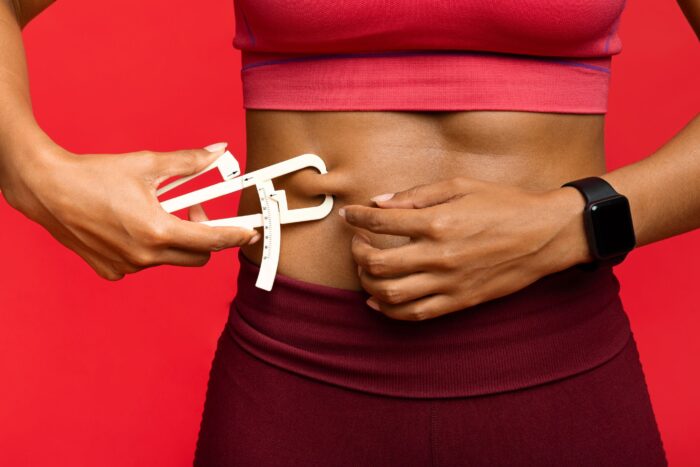
A Dexa scan can also be used to determine the body fat and muscle distribution inside th
e body. It helps to track changes in weight in comparison to the total muscle mass in the body. It also provides the doctor with relevant information about the fat around the organs of the body (visceral fat). This is a good indicator of the risk of chronic diseases.
The 3 types of tissues in the body, that are measured by a Dexa scan include –
- Body fat
- Minerals in the bones
- Organs and muscles (lean tissues)
If you have any of the above health complications, get a Dexa scan done in Mumbai, India with LabsAdvisor.com.
Dexa scan types
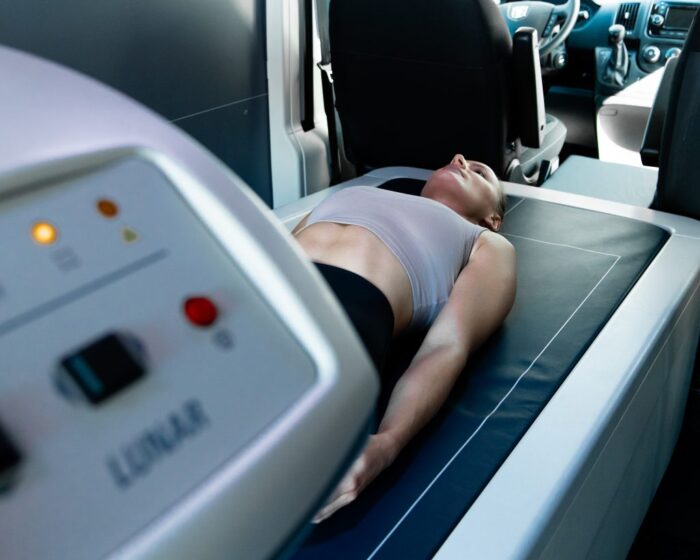
There are 2 types of Dexa scan tests –
Central Dexa scan
The central Dexa scan measures the bone density level in the hip, arm, or spine. The machine used to carry out this scan is large and complex and can be found in big hospitals only.
Peripheral Dexa scan
The peripheral Dexa scan measures the bone density level in the wrist, finger, or heel. The machine used to carry out this type of Dexa scan is relatively smaller and less complex.
Dexa scan preparation
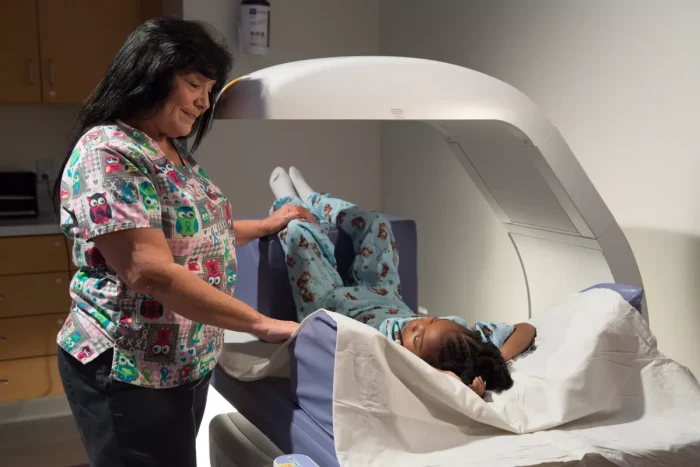
How can I prepare for a Dexa scan?
On arrival at the hospital, the patient may be asked to remove some items of clothing and change into a hospital gown for the Dexa scan.
All items containing metal must be removed before the Dexa scan. Some of these items include –
- Jewelry
- Mobile phone
- Watches
- Keys
- Hearing aids
- Glasses
- Dentures (false teeth)
- Underwire (bras)
- Belts and buckles
- Any clothing item that may consist of metallic threads
In case
- the patient is experiencing any stress or anxiety, sedatives can be used to help calm them during the scan.
- the patient is pregnant, the doctor must be informed as the radiation from the X-rays can be harmful to the baby’s development.
No food precautions or restrictions need to be made before or after a Dexa scan.
Note: If you take any calcium supplements or medications, you should put a stop to them 24 hours before a Dexa scan.
Dexa scan procedure
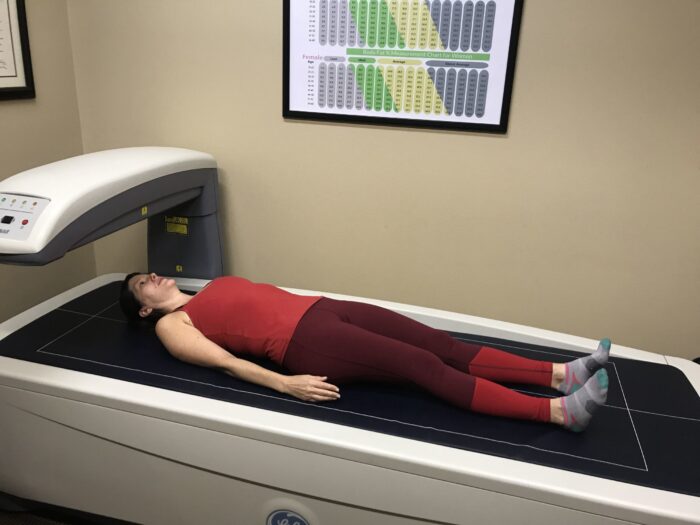
What is the procedure for a Dexa scan?
On arrival at the hospital, the Dexa scan procedure usually takes place in the following manner:
- Depending on the body part that is being examined, the patient may be asked to change into a medical gown
- The patient is then made to remove all metal items (as mentioned above)
- A form is then filled out by the patient to take safety precautions. The patient is also free to discuss any issues/concerns with the doctor
- The patient is then made to enter the Dexa scan room where he/she is made to lie down on a padded table, comfortably
- There is an imaging device that looks like an arm, placed above the patient and an X-ray generator placed under the table which then begins to move
- The Dexa scan begins
Dexa scan side effects
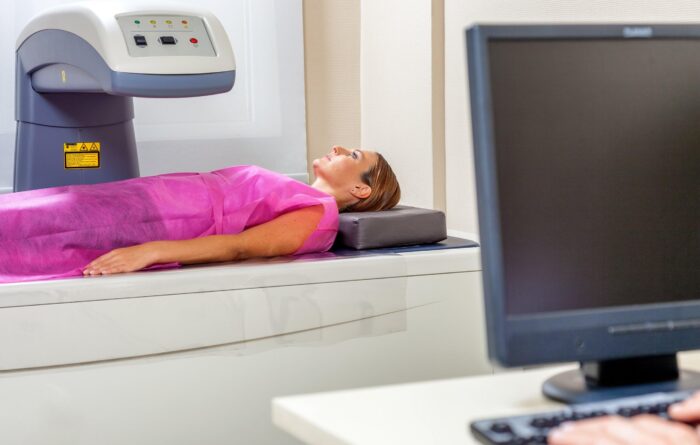
A Dexa scan is a fast and painless procedure. It is considered to be very safe and even the level of radiation used in these scans is much lower than that of a standard X-ray scan. No follow-up care is required post a Dexa scan and the patient should be able to resume usual activity right after the scan.
In case of pregnancy, the doctor must be consulted in advance as the radiation from the X-ray beams can be harmful to the unborn baby.
How much time does a Dexa scan take?
A Dexa scan usually takes about 20 to 25 minutes. The patient is usually in and out within 30 minutes and can resume their day normally.














